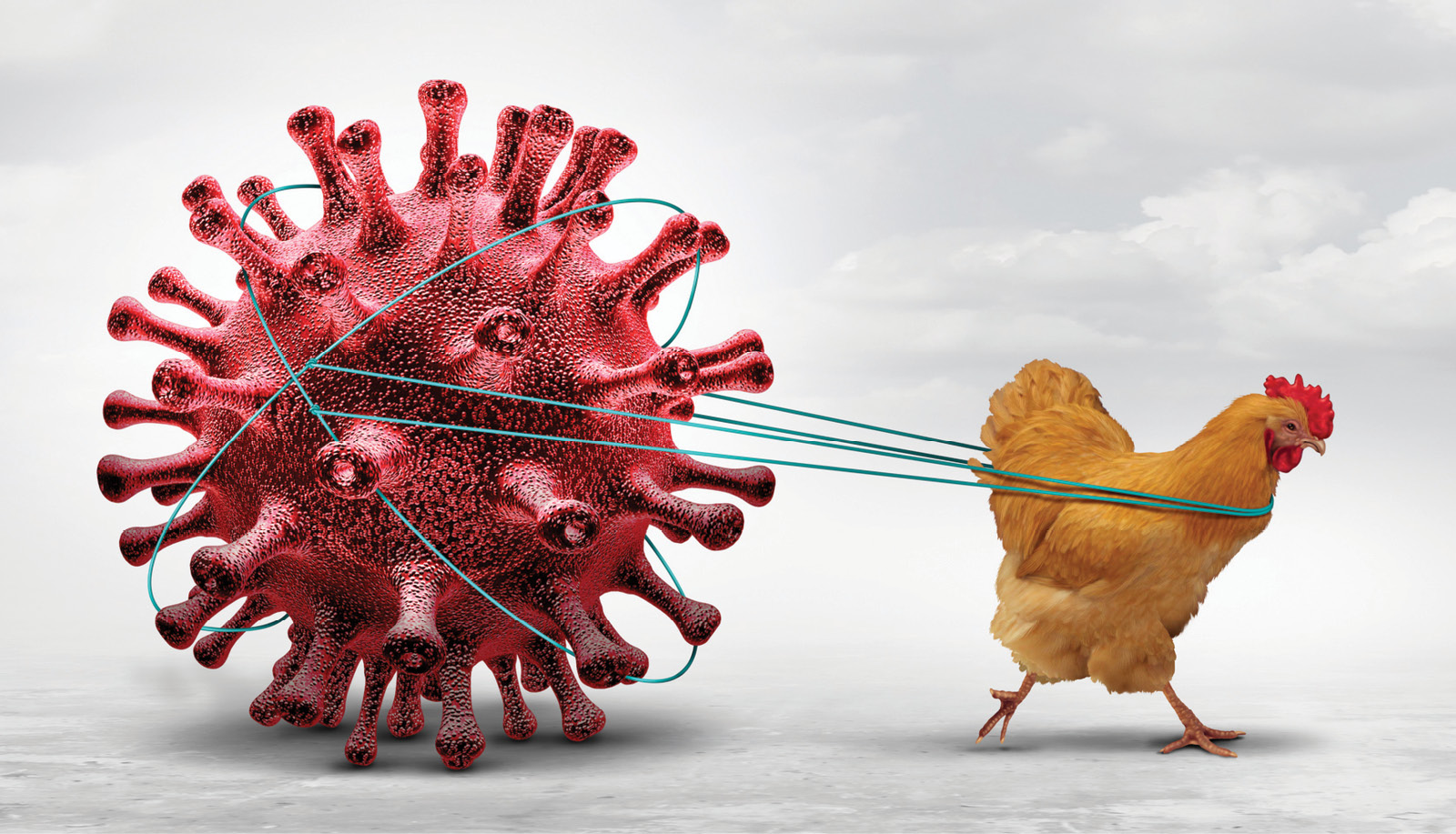Flu season officially starts in October, and this year you may have a new type of virus to worry about—avian influenza, more commonly known as bird flu.
Bird flu was once mainly confined to birds—wild birds like ducks and geese and domestic birds like chicken and turkey. But a new and uniquely contagious and deadly strain of the bird flu virus—H5N1—has spread to mammals, including humans.
First, H5N1 began infecting birds that don’t normally get bird flu, like eagles, pelicans, and penguins. Birds also were much sicker from the flu, with massive die-offs of seabirds in Europe. In 2020, there was the most widespread bird flu outbreak in U.S. history, with 90 million farmed birds dying.
The new bird flu spread to wild mammals, like foxes, raccoons, skunks, coyotes, badgers, bobcats, mountain lions, bears, otters, free-ranging cats, and even sea lions, with a massive die-off of 25,000 sea lions in South America. In 2024, H1N5 spread to cows in America, infecting 137 herds across 12 states. Exposure to those cows has led to four human cases of H5N1 in the United States.
Human Risk
Since 2000, 888 people in 23 countries have been infected with bird flu, and 463 have died, a fatality rate of 52 percent. Bird flu is so deadly in humans because people don’t have any “immune memory” for it. They don’t have antibodies to fight off the virus. The unchecked virus overwhelms the system, triggering a condition called “acute respiratory distress syndrome,” the lung condition that is the typical cause of death in people who die from COVID-19.
Concern About Spread
Scientists are now seeing the virus spread from cow to cow, which is worrisome. The fact that H5N1 is spreading mammal-to-mammal increases the risk that the virus might someday evolve to spread between humans, too. All pandemics have started when a virus confined to an animal species made a “jump” to humans—and started spreading human to human. Public health researchers from Johns Hopkins University wrote in the New York Times in May 2024: “H5N1 is in a better position than ever to move between species and spill over aggressively into humans.”
People get bird flu when enough virus gets into a person’s eyes, nose or mouth, or is inhaled. As of now, the likelihood of your getting bird flu is very low. Only four Americans have contracted the virus, and they all got it from infected cows.
Prevention 101
While the threat of contracting bird flu is low, it’s not nonexistent. Here is how to protect yourself, according to the Centers for Disease Control and Prevention.
For workers and volunteers at risk. People at higher risk include those who work at bird rehabilitation centers, at bird and other animal sanctuaries, poultry farm and dairy farm workers, people who raise backyard bird flocks, and responders to bird flu outbreaks in birds or other animals.
If that list includes you, make sure to always wear protective equipment when interacting with birds or cows. That includes gloves, an N95 respirator (if one isn’t available, wear a well-fitting mask), and goggles. Afterward, throw away the gloves and facemask. Also, make sure you wash your hands with soap and water after touching birds or cows.
In addition, avoid touching your mouth, nose or eyes after contact with birds or cows, or with surfaces and materials that could be contaminated with saliva, mucus, or feces from birds or cows.
For those who drink milk. Viral fragments (but not the live virus) were found in the commercial milk supply across the United States. Live virus was found in some raw milk, but it was inactivated during pasteurization. Both the U.S. Food and Drug Administration and the U.S. Department of Agriculture say that pasteurized milk—including infant and toddler formula—is safe. Raw milk, however, may pose a threat and is best avoided.
For those cooking with beef, poultry, and eggs. Use a food thermometer to make sure you cook all beef, poultry, and eggs to an internal temperature of 165°F, which kills bacteria and viruses. Keep yolks and egg whites firm and not runny. Avoid eating raw or undercooked eggs in dough, sauces, and other items. To prevent contamination, separate uncooked (raw) poultry from other foods. Frequently wash your hands with soap and water, and do the same with the surfaces you use to prepare food.
For those who enjoy the outdoors. Avoid all wild birds and wild bird carcasses. Wild birds infected with bird flu include shorebirds, seabirds, waterfowl, hawks, eagles, falcons, owls, crows, vultures, and gamebirds. If you see a dying or dead wild bird, stay away from it—and keep any pets away from it. However, a wild bird doesn’t have to look sick to be sick. Presume any wild bird is infected.
Also avoid contact with any species of wild mammals that are known to have been infected with bird flu. They include foxes, raccoons, skunks, coyotes, badgers, bobcats, mountain lions, bears, otters, free-ranging cats, sea lions, and seals.
In particular, be wary of animals that are acting strangely, like showing little or no fear response to humans. The virus can affect the brains of wild animals, causing behavioral abnormalities.
For those who hunt. If you’re a hunter who handles wild birds, you should dress game birds in the field, if possible. When dressing, wear gloves, an N95 respirator or well-fitting facemask, and eye protection. Afterward, throw away the gloves and facemask, and wash your hands with soap and water.
For those traveling abroad. Don’t visit poultry farms, bird markets, or other places where live poultry is raised, kept, or sold. Don’t eat undercooked poultry products.

